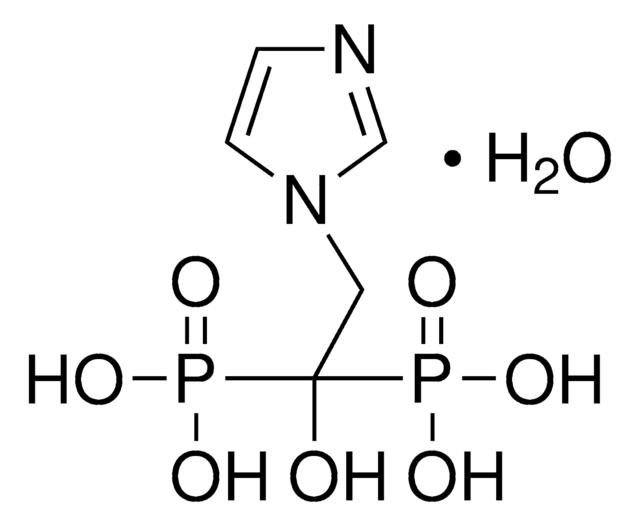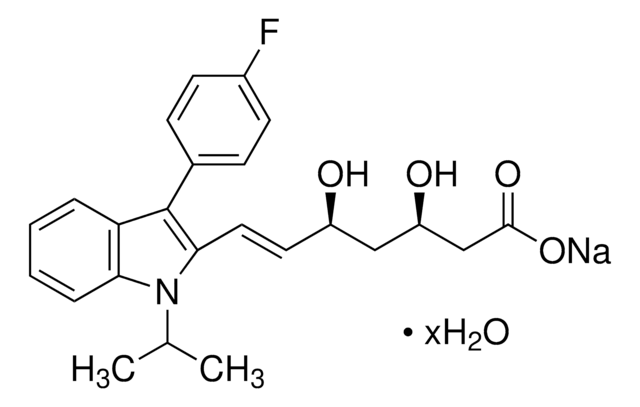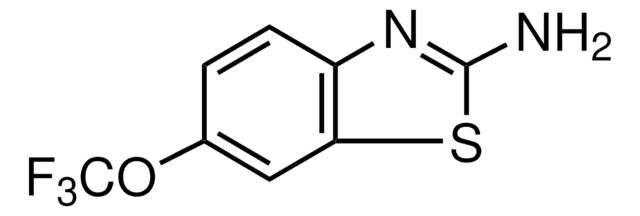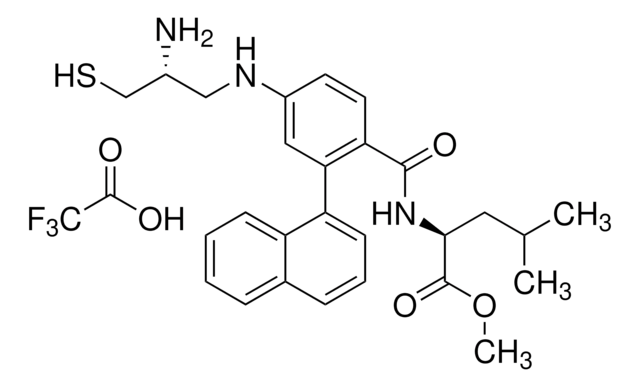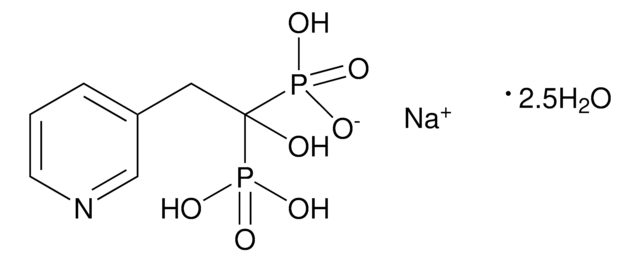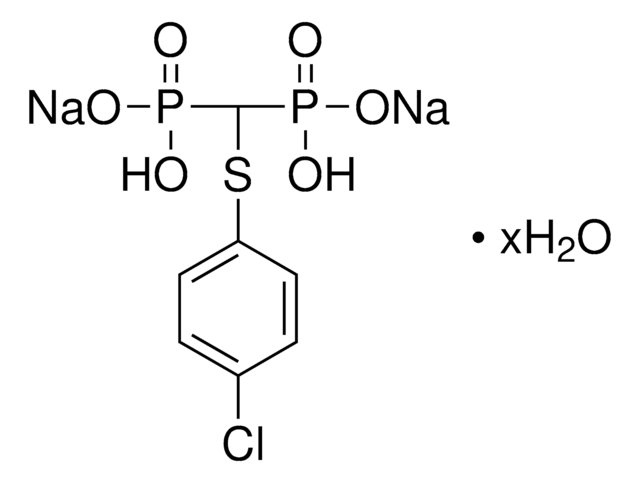SML0223
Zoledronic acid monohydrate
≥98% (HPLC)
Sinónimos:
P,P′-[1-Hydroxy-2-(1H-imidazol-1-yl)ethylidene]bisphosphonic acid monohydrate, Zoledronate monohydrate, [1-hydroxy-2-(1H-imidazol-1-yl)ethane-1,1-diyl]bis(phosphonic acid) monohydrate
About This Item
Productos recomendados
assay
≥98% (HPLC)
form
powder
storage condition
desiccated
protect from light
color
white to beige
solubility
H2O: ≥2 mg/mL
storage temp.
2-8°C
SMILES string
O.OC(Cn1ccnc1)(P(O)(O)=O)P(O)(O)=O
InChI
1S/C5H10N2O7P2.H2O/c8-5(15(9,10)11,16(12,13)14)3-7-2-1-6-4-7;/h1-2,4,8H,3H2,(H2,9,10,11)(H2,12,13,14);1H2
InChI key
FUXFIVRTGHOMSO-UHFFFAOYSA-N
¿Está buscando productos similares? Visita Guía de comparación de productos
Application
- as an inhibitor for cell proliferation in glioblastoma, breast cancer tumor and prostate cancer cell line LAPC4
- as a conjugate with D,L-lactide 75: glycolide 25 (PLGA) to analyze its bone formation functionality in distal femur
- as an inhibitor for farnesyl diphosphate synthase enzyme in glioblastoma cells
Biochem/physiol Actions
Preparation Note
signalword
Warning
hcodes
Hazard Classifications
Eye Irrit. 2 - Skin Irrit. 2 - STOT SE 3
target_organs
Respiratory system
Storage Class
11 - Combustible Solids
wgk_germany
WGK 3
flash_point_f
Not applicable
flash_point_c
Not applicable
Elija entre una de las versiones más recientes:
¿Ya tiene este producto?
Encuentre la documentación para los productos que ha comprado recientemente en la Biblioteca de documentos.
Los clientes también vieron
Contenido relacionado
Discover Bioactive Small Molecules for Lipid Signaling Research
Nuestro equipo de científicos tiene experiencia en todas las áreas de investigación: Ciencias de la vida, Ciencia de los materiales, Síntesis química, Cromatografía, Analítica y muchas otras.
Póngase en contacto con el Servicio técnico